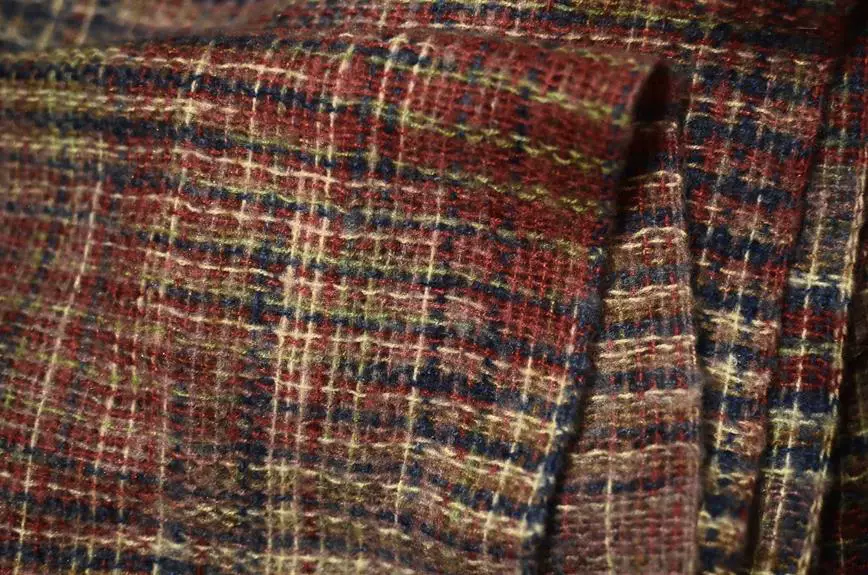Can you tailor a wool coat to achieve the perfect fit and timeless style?
Understanding the art of tailoring can elevate your wardrobe and ensure that your wool coat drapes flawlessly over your shoulders.
Mastering the intricacies of alterations for wool fabrics and finding a skilled tailor are essential for achieving a tailored look that exudes sophistication.
This guide will walk you through the importance of proper fit, different types of alterations, considerations for working with wool fabrics, and how to maintain the structure of your coat.
With this knowledge, you can confidently navigate the world of tailoring and ensure that your wool coat becomes a staple in your wardrobe for years to come.
Key Takeaways
- Proper fit is crucial for both a flattering and comfortable look.
- Different types of alterations can be made to achieve the desired fit, such as adjusting sleeve length, waistline, shoulder width, and hemline.
- When working with wool fabrics, it is important to consider their unique characteristics and how they will respond to alterations.
- Finding a skilled tailor experienced in working with wool garments is essential to ensure the best results.
Importance of Proper Fit
When tailoring a wool coat, you should always prioritize the importance of proper fit to ensure it flatters your body and provides optimal comfort. Proper fit is essential for a tailored wool coat as it can make or break the overall look.
To achieve a proper fit, consider your body shape, style preferences, and the intended use of the coat. Understanding your body shape is crucial in determining how the coat should fit. Whether you prefer a more fitted silhouette or a looser, more relaxed style, ensuring the coat aligns with your style preferences is key.
Additionally, consider the intended use of the coat. If it's for formal occasions, a more structured fit may be preferred, whereas a casual everyday coat could allow for a bit more room.
Ultimately, the proper fit of a tailored wool coat not only enhances your appearance but also ensures your comfort. Taking the time to achieve the right fit will result in a coat that not only looks good but also makes you feel good.
Types of Alterations
To tailor a wool coat, you can make various types of alterations to achieve the perfect fit and style. The key to achieving a well-tailored look lies in paying attention to details such as sleeve length, waistline, shoulder width, and hemline. Here's a breakdown of the types of alterations you can consider for your wool coat:
| Type of Alteration | Description |
|---|---|
| Sleeve Length | Shorten or lengthen the sleeves to ensure they hit at the right point on your wrist. |
| Waistline | Adjust the waistline for a more tapered or relaxed fit, depending on your preference. |
| Shoulder Width | Modify the shoulder width for improved comfort and a more flattering silhouette. |
| Hemline | Alter the hemline to achieve the desired length, ensuring a balanced and polished look. |
These alterations can significantly impact the overall appearance and comfort of your wool coat. Whether it's enhancing the fit or customizing the style, these adjustments allow you to create a coat that truly complements your body shape and personal taste.
Considerations for Wool Fabrics
You'll need to carefully consider the type of wool fabric when tailoring a coat to ensure the best results.
Wool comes in various types, each with its own characteristics that can significantly impact the tailoring process. Understanding the fabric quality is crucial for achieving the desired outcome.
High-quality wool fabrics, such as merino or cashmere, aren't only luxurious but also easier to work with during tailoring. These fabrics are often more resilient, drape beautifully, and are less prone to wrinkling, making them ideal for tailored coats.
When it comes to wool care, it's important to assess how the fabric will respond to alterations. Some wool fabrics may be more prone to stretching or shrinking, affecting the fit of the coat after tailoring.
Additionally, consider the fabric's weight and texture, as these factors can influence the overall look and feel of the tailored coat.
Finding a Skilled Tailor
Before starting the tailoring process, it's essential to find a skilled tailor who's experience working with wool fabrics. Skilled tailors are adept at handling the intricacies of wool and can provide the precision required for custom alterations on wool coats. When seeking a skilled tailor, look for someone with a proven track record of working with wool garments and who can demonstrate expertise in handling different types of wool, from lightweight merino to heavy-duty tweed.
A skilled tailor will understand the unique properties of wool, such as its tendency to shrink or stretch, and will be able to make the necessary adjustments without compromising the integrity of the fabric. It's important to inquire about their experience with wool specifically, as not all tailors are equally versed in working with this material.
Additionally, seek out referrals and reviews from individuals who've had wool garments tailored by the specific tailor you're considering. This firsthand feedback can offer valuable insights into the tailor's ability to execute custom alterations on wool coats with precision and expertise.
Maintaining Coat Structure
Maintain the coat's structure by regularly brushing off any lint or debris and hanging it on a sturdy wooden hanger when not in use. This will help in maintaining shape and preserving integrity, ensuring your wool coat retains its crisp and polished appearance for years to come.
In addition to these steps, consider the following to further enhance the longevity of your coat:
- Avoid Overcrowding: Store your coat in a closet with enough space to prevent it from being crushed or misshapen by other garments.
- Steam Care: Use a handheld steamer to gently remove any wrinkles, being careful not to saturate the wool. This will help the coat retain its original structure.
- Professional Cleaning: Periodically take your coat to a professional cleaner experienced in handling wool garments. They'll have the expertise and tools to ensure your coat is thoroughly cleaned without compromising its shape or quality.
Frequently Asked Questions
Can a Wool Coat Be Tailored to Accommodate Weight Fluctuations?
Yes, you can tailor a wool coat to accommodate weight fluctuations. A skilled tailor can adjust the seams and darts to allow for changes in body shape. It's a great way to ensure your wool coat fits well regardless of seasonal adjustments.
Are There Any Specific Alterations That Can Be Done to Make a Wool Coat More Weather-Resistant?
You can weatherproof a wool coat through various alterations like adding a waterproof lining or seam sealing. However, keep in mind the limitations of the fabric and the impact of tailoring on the coat's overall aesthetic.
Can a Skilled Tailor Alter the Style or Silhouette of a Wool Coat, or Are They Limited to Minor Adjustments?
A skilled tailor can customize the silhouette and update the style of a wool coat, not just limited to minor adjustments. This allows for accommodating weight fluctuations and enhancing weather resistance, providing a tailored solution to your needs.
How Do You Determine if a Tailor Has Experience Working With Wool Fabrics?
To find a skilled tailor with wool fabric expertise and mastery in tailoring for different body shapes, examine their portfolio for wool garments tailored to diverse body types, and ask about their experience with wool fabrics.
What Are Some Common Mistakes to Avoid When Getting a Wool Coat Tailored?
When tailoring a wool coat, avoid common mistakes like not considering fabric choices and skipping fit adjustments. Tips for tailoring include choosing a skilled tailor, communicating clearly, and ensuring proper measurements for a flawless outcome.
- Troubleshooting Common Issues With Nonwoven Fabrics - July 11, 2025
- How Nonwoven Wallpaper Differs From Traditional Paper - July 11, 2025
- Are Reusable Nonwoven Bags Eco-Friendly? - July 11, 2025






